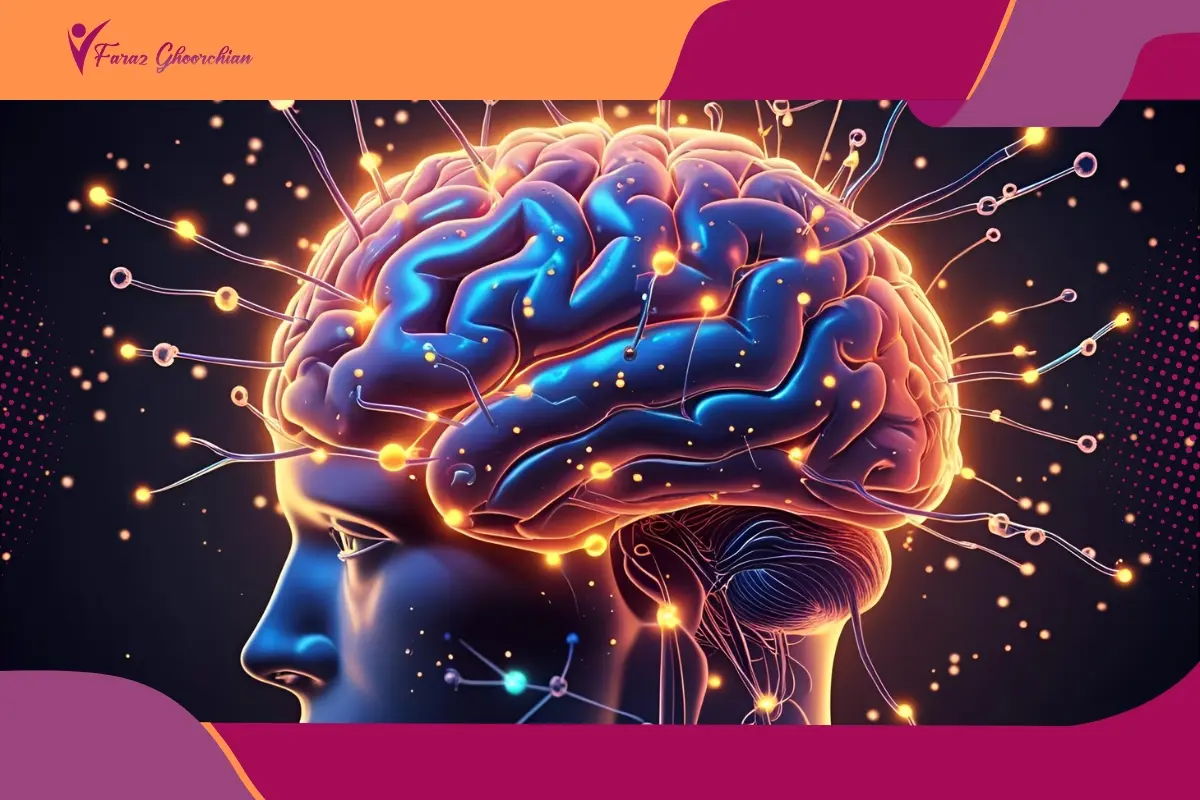Discover the neuroscience of porn addiction, brain changes, dopamine effects, and recovery strategies based on the latest research.
- 1. Introduction: Why Neuroscience Matters in Porn Addiction
- 2. Brain Chemistry in Porn Addiction: The Science Explained
- 3. Dopamine and Porn Addiction: Chasing the High
- 4. Neural Pathways Involved in Porn Addiction
- 5. Brain Plasticity and Compulsive Porn Use
- 6. Behavioral Changes and the Brain: More Than a Bad Habit
- 7. Emotional and Hormonal Effects: Anxiety, Depression, and Social Isolation
- 8. Adolescents, Gender, and Brain Vulnerability
- 9. Neuroscience-Based Porn Addiction Treatments and Recovery
- 10. Relapse Prevention, Brain Recovery, and Lasting Change
- 11. Conclusion
Introduction: Why Neuroscience Matters in Porn Addiction
People rarely stop to think about what’s actually happening in their heads when habits form. With The Neuroscience of Porn Addiction, the story is often far more personal than most expect. Over time, patterns develop that quietly alter brain chemistry in porn addiction and carve out new, stubborn neural pathways involved in porn addiction. Someone might notice little changes at first, such as a shift in mood, a creeping sense that it’s harder to focus, or that cravings linger longer than before. The science of addiction and recovery shows these shifts aren’t just random. They are rooted in how the brain works and adapts. For many, learning about brain plasticity and porn addiction is not just informative but also a relief to realize that real change is possible, starting right inside their own mind.
Brain Chemistry in Porn Addiction: The Science Explained
Anyone who has ever struggled with compulsive porn use knows there is more going on than meets the eye. The moment someone clicks play, a burst of dopamine and porn addiction chemistry floods the brain. At first, this rush feels exciting or even harmless, but the science behind brain chemistry in porn addiction reveals that repeated exposure starts to change what the brain craves. With time, the brain reward system and digital porn use get tangled up, so that a quick glance at a screen triggers much stronger urges than before. Most people do not realize how these changes affect motivation or mood until old hobbies seem dull and relationships feel less rewarding.
What is happening is that new neural pathways involved in porn addiction are forming in the background, nudging people to seek out the same stimulus over and over. It is not about weakness; it is about how the brain adapts. Learning this is often a turning point, especially when people begin to notice the effects of quitting porn, as it makes sense of so many struggles and shows why recovery is more than just saying “no.” This is where the real neuroscience of addiction and recovery begins to matter.
Dopamine and Porn Addiction: Chasing the High
Ask almost anyone why they turn to online content, and the answer usually isn’t about science. Still, the truth is, dopamine and porn addiction are tangled up in the brain’s reward circuits in ways that can catch people off guard. The first few times, the thrill is intense and new, but the brain quickly adapts. Suddenly, the usual videos just don’t spark the same rush, so the search for something different or more stimulating begins. This craving is more than habit. It’s a sign that the neural pathways involved in porn addiction are reshaping what brings pleasure. Researchers studying the neuroscience of internet porn addiction have seen that these cycles leave ordinary activities feeling flat by comparison, making everyday motivation a real struggle. It isn’t uncommon for hobbies, relationships, and even small moments of joy to lose their appeal. Over time, the brain reward system and digital porn use get intertwined, pushing people to chase that high over and over. Real change starts when people understand these patterns and recognize that their brains are trying to adjust, not betray them.
Neural Pathways Involved in Porn Addiction
Few people think about what happens inside the brain when habits take hold, but the story behind neural pathways involved in porn addiction is surprisingly complex. Each time someone seeks out digital content, the brain’s reward system becomes more deeply wired to expect pleasure from that experience. As these patterns repeat, specific neural pathways grow stronger, making it easier for cravings to surface even when they are unwanted. Over time, the compulsive porn use brain effects show up as the brain defaults to seeking instant gratification.
Research on brain plasticity and porn addiction highlights that these connections are not fixed. The brain, always adapting, can form new routes with the right changes and supports. For those trapped by these cycles, breaking free starts with understanding how these learned bad habits can be unlearned. Recognizing the way the brain shapes and is shaped by repeated behavior gives people hope for true recovery and lasting change.
Brain Plasticity and Compulsive Porn Use
For anyone struggling with unwanted habits, the idea of brain plasticity and porn addiction can be both intimidating and surprisingly hopeful. It’s not just scientists who care about how brains change; people living with compulsive behaviors often notice how certain routines seem to get easier to repeat, even when they wish they wouldn’t. That’s the real impact of compulsive porn use brain effects at work. The more someone turns to digital content for comfort or escape, the stronger those neural pathways involved in porn addiction become, until reaching for a phone or laptop feels almost automatic. What many don’t realize is that the brain never really stops learning. Over time, and with some patience, those same pathways can fade if new habits take their place. In recovery, little victories matter. Every time someone chooses a walk, a call with a friend, or a new activity, they’re helping the brain build different connections. Real change may be gradual, but the science shows it is absolutely possible.
Behavioral Changes and the Brain: More Than a Bad Habit
Anyone who’s gone through a stretch of compulsive viewing will probably recognize how fast little things can start to shift. At first, behavioral changes caused by porn addiction are easy to brush off. Maybe someone finds it harder to finish a project at work or loses interest in hobbies that once made them happy. Sometimes it sneaks up as a drop in energy, a foggy kind of focus, or a sense that even time with friends doesn’t feel the same. Scientists looking at compulsive porn use brain effects point out that this isn’t just a matter of bad habits piling up. There’s a deeper, quieter process happening, with brain plasticity and porn addiction working together in the background to rewire what feels rewarding or meaningful. These changes are real, but so is the possibility for things to shift in a better direction. People often find that by paying attention to how their minds respond, and by learning about How Porn Affects Your Productivity and Focus, they can start to build new routines that make room for genuine recovery.
Emotional and Hormonal Effects: Anxiety, Depression, and Social Isolation
It often catches people off guard how much compulsive viewing can change the way they feel, think, and connect. For some, the porn addiction and anxiety brain link shows up as a low-grade worry that never really fades, even when life seems normal. Others notice that their spark just is not there anymore, a quiet sign of the depression caused by porn addiction. Hormones are part of the picture too, and the hormonal impact on porn addiction brain can make it hard to tell what is mood, what is stress, and what is just the brain working overtime.
Here are a few things people talk about:
- Waking up with tension in the chest, that gnawing anxiety tied to the porn addiction and anxiety brain link
- Ordinary days feeling strangely heavy or empty, something that lines up with the depression caused by porn addiction
- Sudden appetite changes or restless nights, with hormones out of balance and routines off track
- That drifting feeling in a crowd or even at home, classic porn addiction and social isolation brain at work
- Moments of disconnection with loved ones, where the porn addiction effects on relationships brain quietly shapes how close people feel
These patterns might seem random at first, but they all tie back to the ways the brain is adapting and responding. Noticing them is the first real step toward understanding what needs to heal.
Adolescents, Gender, and Brain Vulnerability
Ask any parent or teacher, and they’ll tell you: teens today face a world their own childhoods barely prepared them for. The adolescent brain and porn addiction are tangled together in ways that can catch even the most attentive families by surprise. In these years, the brain is still in flux, learning what feels good and what feels important. Exposure to digital content during this period can actually shape teen porn addiction brain changes that linger well into adulthood. The science behind the neuroscience of porn addiction in men vs women suggests the risks are not the same for everyone. Boys might find themselves drawn to compulsive habits, while girls often wrestle more with mood swings and self-image issues. These early patterns aren’t set in stone, but they do lay the groundwork for how young people handle stress, connection, and even future relationships. Noticing the warning signs early can make all the difference.
Neuroscience-Based Porn Addiction Treatments and Recovery
Recovery looks different for everyone, but recent advances in science are opening new doors. A lot of people are surprised to learn that neuroscience-based porn addiction treatments don’t just focus on quitting, but on actually helping the brain relearn how to find real satisfaction and calm. Therapists now use techniques grounded in the neuroscience of addiction and recovery, like cognitive-behavioral therapy, to help people catch those old patterns before they spiral. Mindfulness and physical activity play a bigger role than most expect, supporting brain plasticity and porn addiction recovery in small but steady ways. Some clinics are even starting to look at new options, such as brain stimulation therapy for porn addiction, for people who feel stuck in the same loop no matter what they try.
There’s something hopeful about knowing the brain isn’t fixed. With time, and often a mix of trial and error, the evidence shows that brain changes during porn addiction recovery can and do happen. It’s less about chasing perfection, more about showing up for your own mind, day after day.
Relapse Prevention, Brain Recovery, and Lasting Change
Nobody really prepares you for how unpredictable the recovery process can feel. Even after weeks or months of progress, old urges can pop up out of nowhere, and that is where the science behind relapse prevention neuroscience porn addiction becomes truly practical. It is not just about willpower; it is about spotting the little patterns, like certain places, feelings, or even tired afternoons, that make slipping back easier. As people keep at it, small but real brain changes during porn addiction recovery start to show. Maybe it is feeling more interested in music again, or laughing more with friends, or finally sleeping through the night.
Specialists talk a lot about the neuroscience of addiction and recovery, but for most people, it comes down to what works in real life. Sometimes that means texting a friend before a rough moment or choosing to go outside for a walk instead of falling back into old routines. It is a messy, personal process, and setbacks do not mean failure. Over time, those new habits and brain pathways can outgrow the old ones, making room for change that actually lasts.
Conclusion
After looking closely at the science, it becomes obvious that breaking the cycle is about much more than grit. The story of The Neuroscience of Porn Addiction is really a story of how the brain learns, stumbles, and can eventually recover. For many, the changes in brain chemistry in porn addiction and the way neural pathways involved in porn addiction form are what make this challenge feel so personal. But the same brain that gets stuck can also adapt. Thanks to brain plasticity and porn addiction research, people now have real hope. With steady effort and compassion, those old patterns do not have to define anyone’s future.















